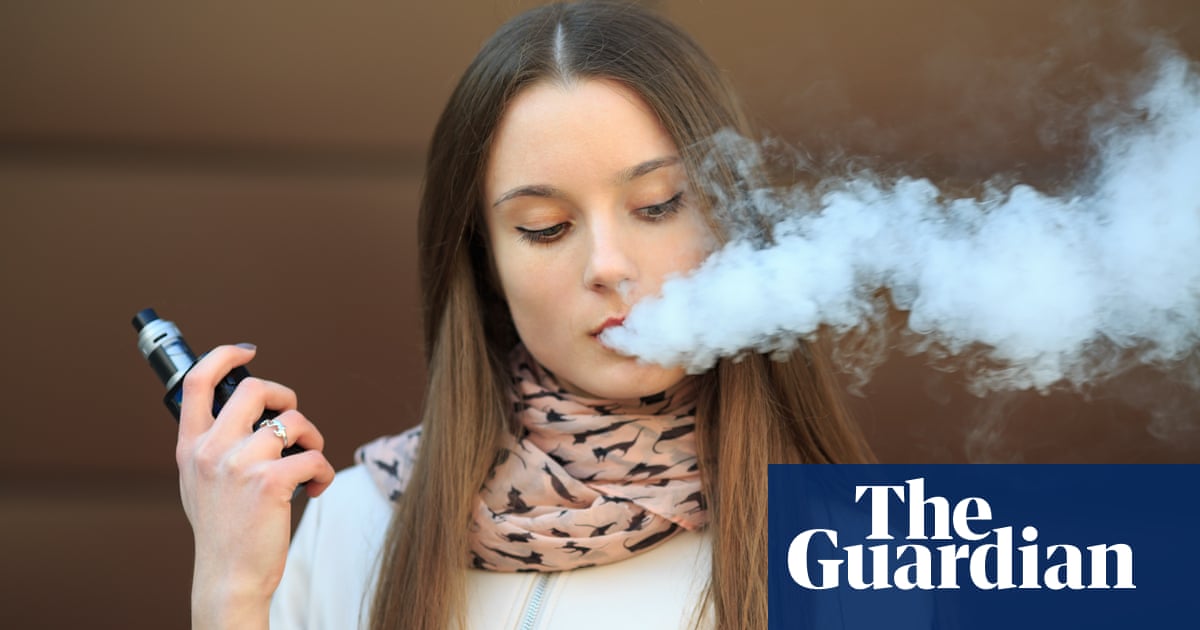
The number of young women vaping every day in the UK more than tripled in the last year, according to government figures.
Data released by the Office for National Statistics (ONS) showed that one in 15 women (6.7%) aged 16-24 vaped daily in 2022 – up from fewer than one in 50 (1.9%) in 2021 – with young women overtaking their male counterparts for e-cigarette usage.
The rise in young women vaping mirrors findings in an NHS survey of school-aged children last year, which showed more than one in five 15-year-old girls using e-cigarettes – hugely outstripping their male counterparts.
The rise in e-cigarette use has been fuelled by the increasing availability of disposable vapes in recent years. These make up the vast majority of vape sales and are sold in flavours including pink lemonade, bubblegum and watermelon ice, which critics say make them more attractive to younger people.
Other countries have recently taken measures to limit their sale. In France, the prime minister, Élisabeth Borne, said on Sunday that the government would soon present a national plan to ban disposable e-cigarettes.
Australia has banned single use vapes, New Zealand has banned most disposable vapes and introduced other measures to limit their sale to young people. Germany has banned flavoured e-cigarettes, while a consultation is under way in Ireland on banning single-use vapes.
In the UK, young women are now more likely to use e-cigarettes than young men, the figures show. The proportion of young women occasionally vaping also rose, from 7.1% in 2021 to 12.2% last year. A total of 3.6% of 16- to 24-year-old men use e-cigarettes every day, and 8.7% vape occasionally.
Figures show that just under one in six people aged 16-24 vape at least occasionally – up from one in nine in 2021.
Meanwhile, the proportion of people smoking fell to its lowest level since comparable figures began. Just 11.2% of people aged 16 and over said they smoked, down from 12.7% last year – continuing a downward trend seen since at least 1974.
NHS England’s chief executive, Amanda Pritchard, said in June that 40 children were admitted to hospital in England last year as a result of “vaping-related disorders”. These include lung damage and worsening asthma symptoms. This was up from 11 in 2021.
Speaking at the NHS ConfedExpo, Pritchard warned that vaping “can lead to lung damage”.
She added: “It’s really important we nip this in the bud so we can keep young people out of hospital and prevent future health issues.”
In May, the prime minister, Rishi Sunak, told ITV’s This Morning programme that he was concerned about the impact that the marketing of vapes could have on his two young daughters.
“We’re looking at how can we strengthen the rules on how are they marketed, promoted, what do they look like. It looks like they are targeted at kids, [which is] ridiculous. I don’t want my kids seduced by any of these things,” he said.
Later that week, the government announced plans to close a legal loophole that allowed retailers and marketing firms to hand out free samples of vapes to under-18s.
Because vapes are not covered by the tobacco advertising rules prohibiting free distribution, they are not considered a tobacco product.












